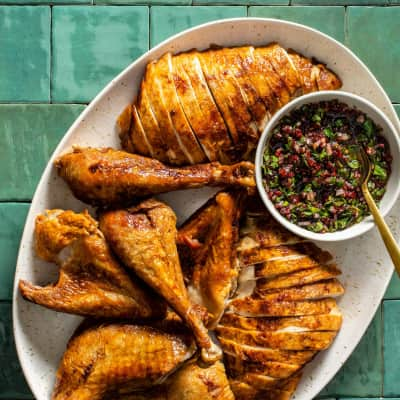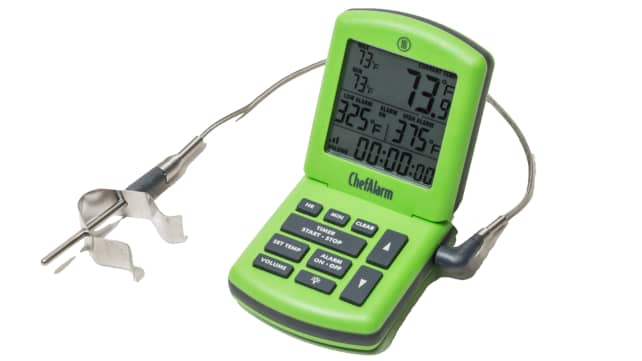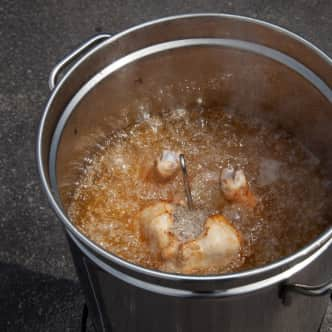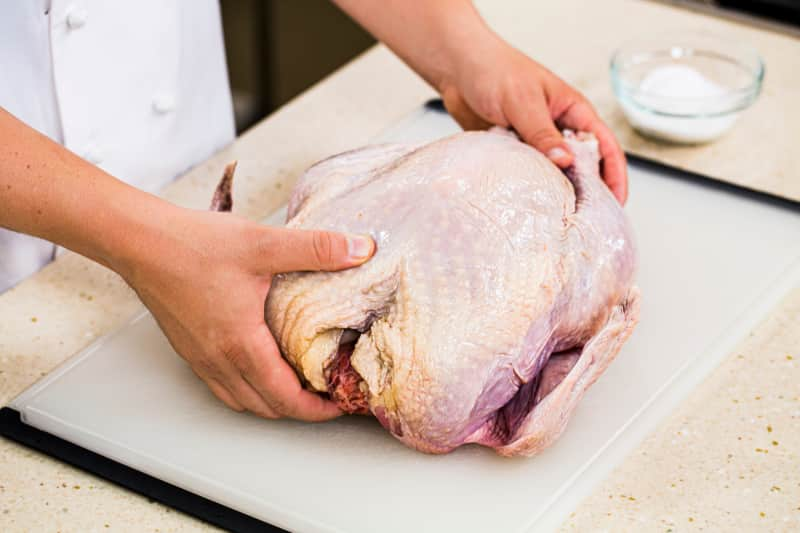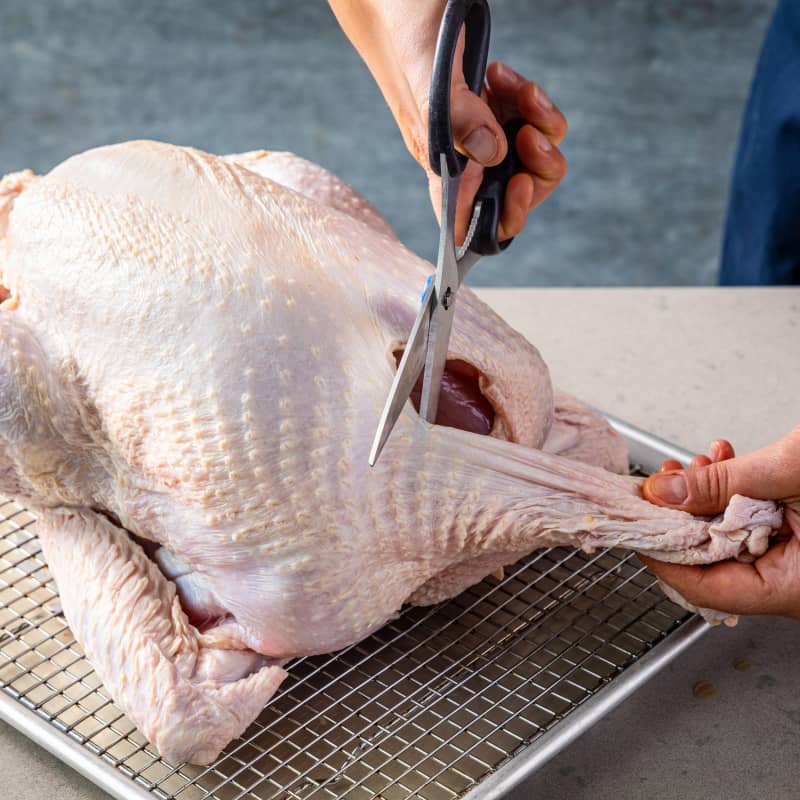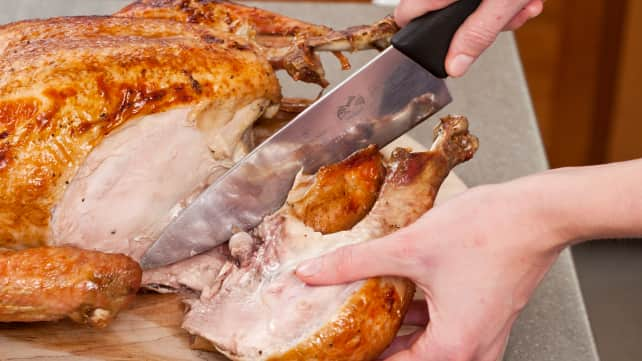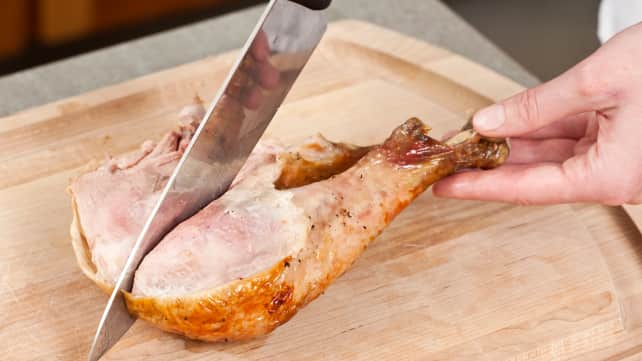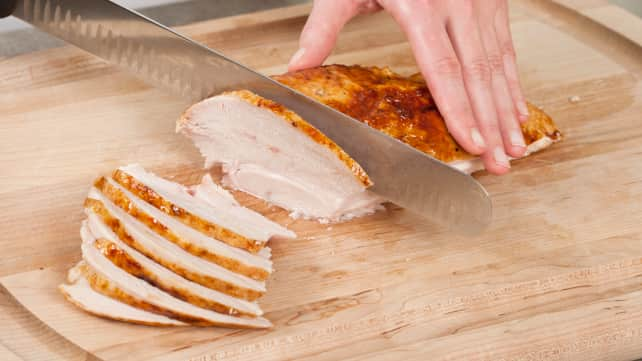A deep-fried turkey is the crispiest-skinned, juiciest bird you’ll ever eat. But cooking one at home can be daunting.
Deep-fried Thanksgiving turkeys have gotten plenty of bad press, particularly from those earnest home cooks who didn’t do quite enough research before deep frying a whole bird. From disastrous oil splatters to tipping fryers and sky-high oil flames, there’s plenty that can go wrong.
But that’s why we’re here: to teach you everything you need to know to make your own deep-fried turkey—and keep both your eyebrows intact. Read on for safety tips, the gear you’ll need, the best ways to season the turkey, and lots more.

